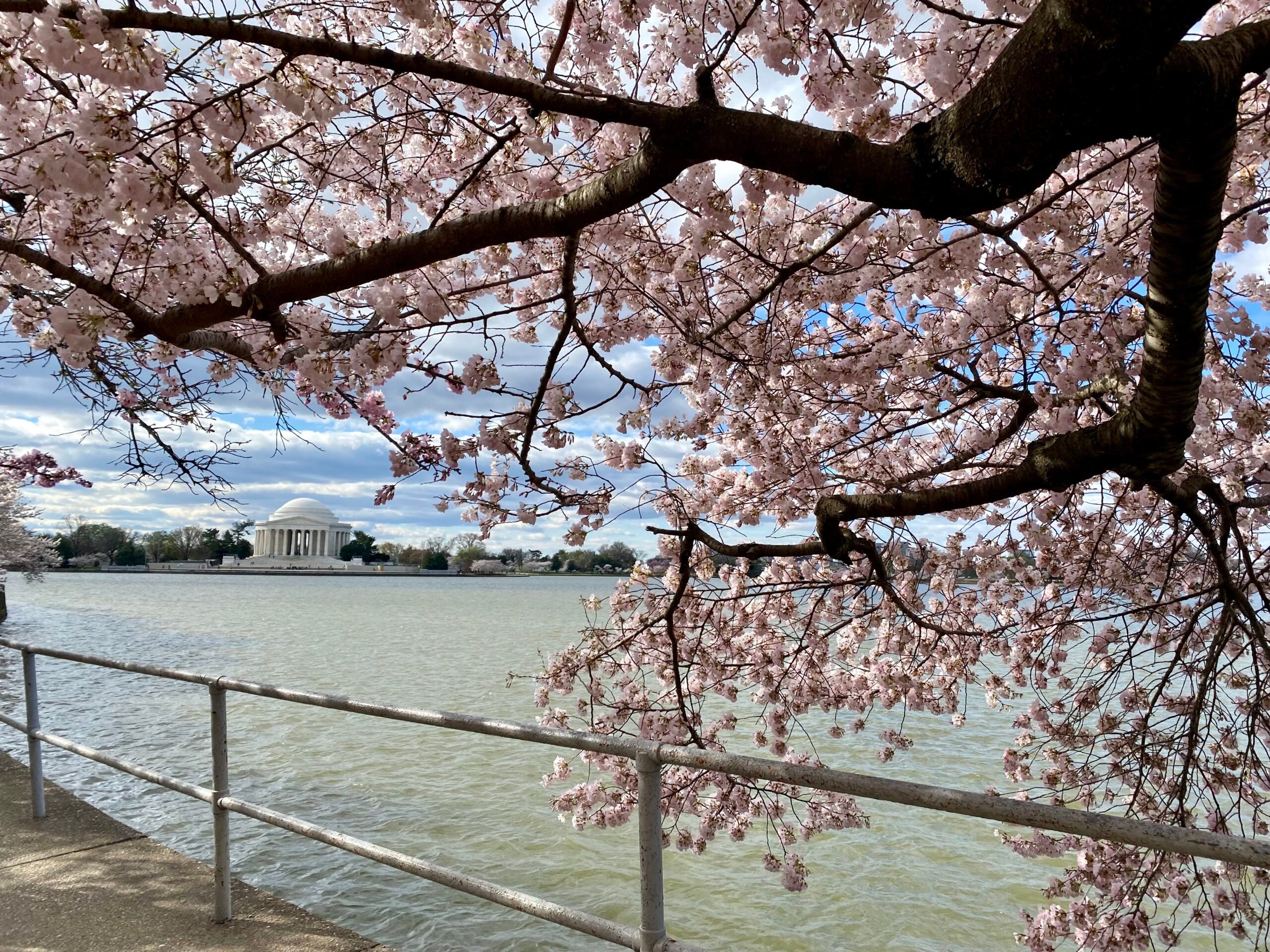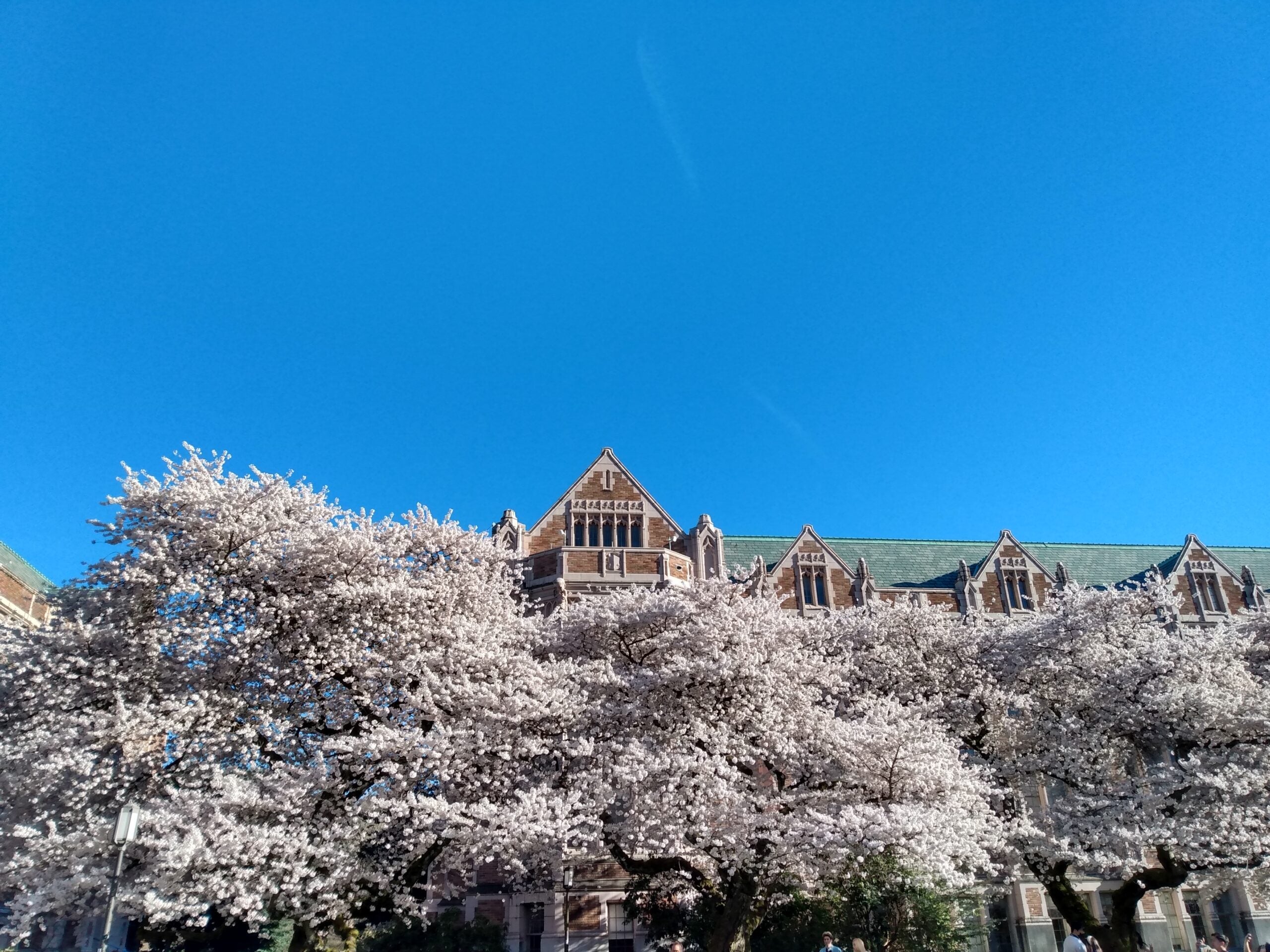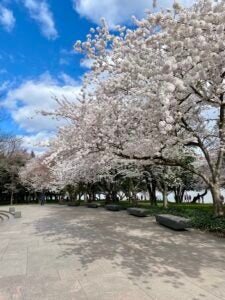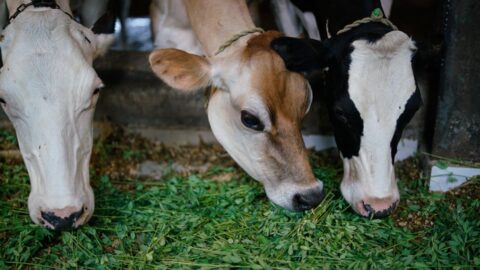Cherry blossoms: a microcosm of the global climate crisis

(This blog was co-authored by EDF Climate Scientist Fiona Lo)
Washington D.C.’s famous cherry blossoms are once again blooming earlier than expected.
In fact, this year’s peak bloom occurred two and a half weeks earlier than the average over the past 100 years, due to near-record warm temperatures in March.
This ranks as the second earliest peak bloom on record. Even the cherry blossom bud cycle occurred faster than any other year in the last two decades.
So what is happening and why is this significant?
Here we break down what you need to know about cherry blossoms and climate change.
How climate change is impacting cherry blossoms
Air temperature is the main driver of the timing of cherry tree flowers blooming, much more than sunlight and rainfall.
In fact, scientists can predict the timing of cherry blossoms blooming based on the number of days above a particular temperature. (The exact temperature depends on the specific type of tree.) The quicker we experience warm days above this temperature, the earlier cherry blossoms can bloom.
Because climate change is warming up most of the planet, this is affecting the timing of the bloom date for cherry blossoms. In Washington D.C., cherry blossoms on average have been blooming about a week earlier than 100 years ago – and this year was even earlier than that.
It’s not just a Washington D.C. problem. Almost three thousand miles away, on the other side of the country, the cherry blossoms in Seattle, Washington also bloomed early this year.

And in Japan, the spring bloom is now two weeks earlier than historically. And because we have bloom records going back 1,200 years in Japan, we can clearly see that the change in bloom date began a little over 100 years ago, coinciding with the time that human activities started noticeably influencing the climate.
Many studies predict that cherry blossom bloom dates will continue to get earlier with further climate change, with some predicting peak blooms in early March for Washington D.C. by the end of the century.
But it’s not as simple as a warmer spring means earlier blooms, because these types of trees also need chilling days in order to bloom, which are becoming less frequent with climate change. In some cases that has delayed the blooming of cherry blossoms.
Why shifts in cherry blossom timing matters
As a major tourist attraction and overall beloved event, the earlier peak blooms are a very visual and tangible way to experience climate change firsthand. Through the cherry blossom bloom, you can really see climate change with your own eyes.

It is also a perceptible microcosm of all the other fruit trees and crops undergoing earlier blooms and growth across the world. These shifting timelines can have catastrophic consequences.
For example, when a typical freeze occurs normally, but the plants have already started flowering, it can lead to crop damage and loss. That can be devastating for food security, farmers and their livelihoods, and the overall economy.
So while the blooming cherry blossoms are looked forward to by many, they are also a stark reminder from nature that we must act as fast as possible to curb the climate crisis.
For more information, watch this interview with Ilissa Ocko.












